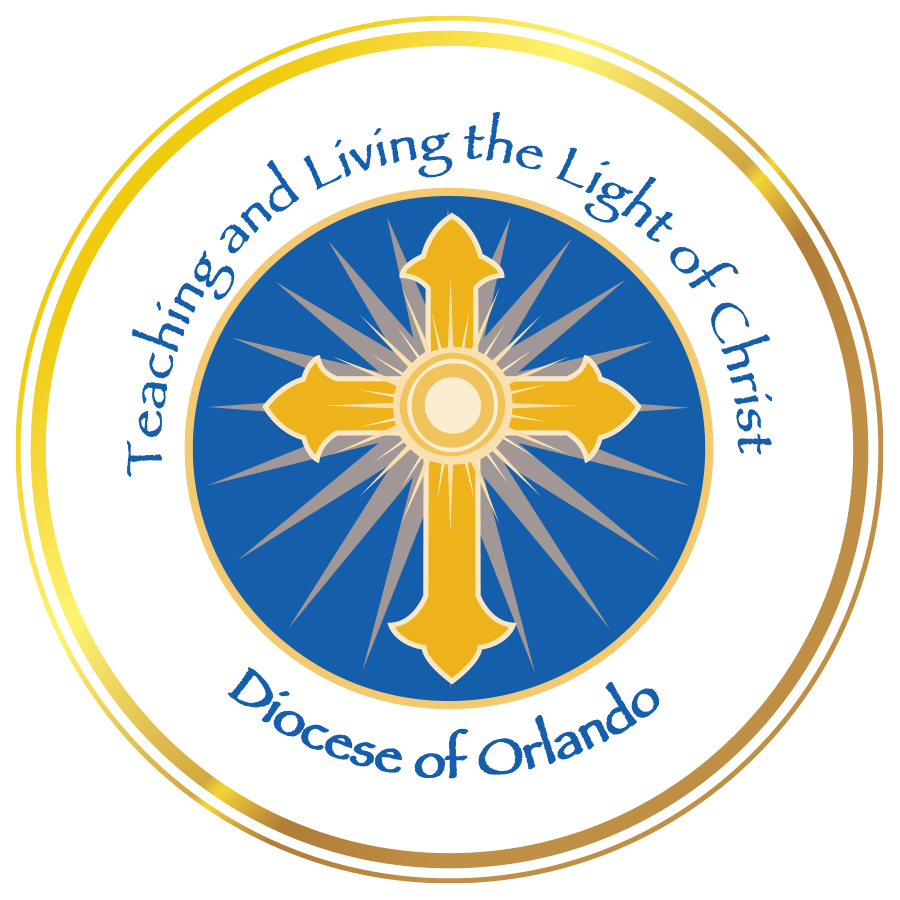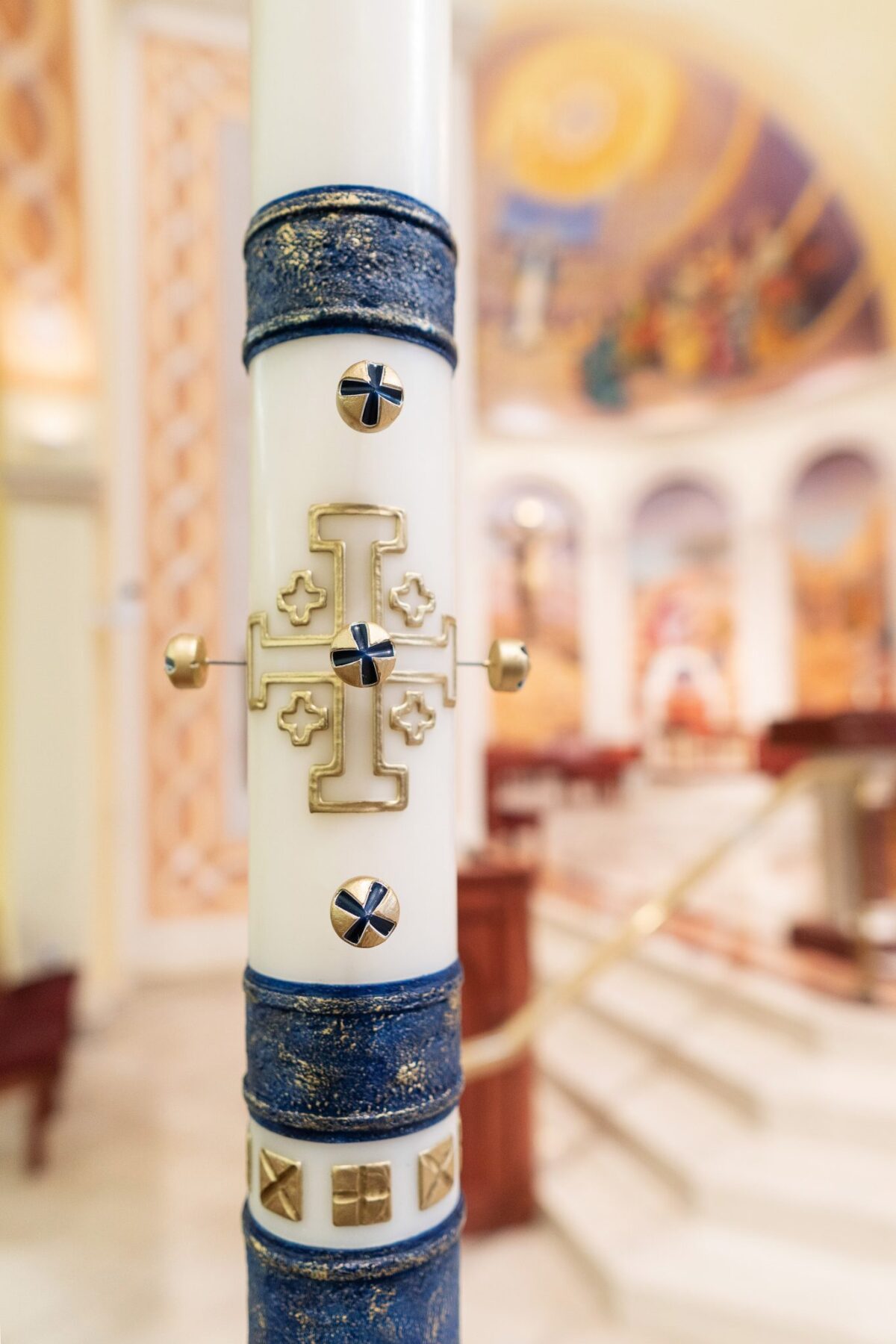FATHER MATTHEW HAWKINS, Parochial Vicar, St. James Cathedral, April 19, 2021
ORLANDO | Arguably, the most prominent symbol of the Easter Vigil is the paschal candle…it’s kind of hard to miss a five-foot light in the middle of an otherwise dark church. It is, of course, meant to be a symbol of Christ, the light of the world. The Vigil begins outside of the church with the blessing of the candle:
Christ yesterday and today
the Beginning and the End
the Alpha
and the Omega
all time belongs to Him
and all the ages
To Him be glory and power
through every age and forever. Amen.
While these words are spoken, the various markings on the candle are traced: a cross, the Greek letters alpha and omega, and the current year. It is a reminder that He is the Lord of all time and space, not only of all time and space, but of all my time and space. The prayer continues:
By His holy
and glorious wounds,
may Christ the Lord
guard us
and protect us. Amen.
It is significant that these words are accompanied by the piercing of the candle with five grains of incense; incense which is meant to release a sweet smelling fragrance only when consumed by fire and five being the number of wounds of Christ (one in each hand and foot, plus the pierced side). The placement of those grains is also meaningful: one centered in the above markings symbolizing all time and space, and the other four circumscribing them.
In His human nature, Christ enters directly into the center of our history, into all suffering, becoming the pivot around which, everything turns. In His divinity, however, He exists outside of all time and space. Theologically this is called the hypostatic union: all things human united to all things divine in the one Person of Jesus Christ. It is in His hour of glory upon the Cross when all things—God and man, heaven and earth, time and eternity, mercy and justice, life and death— are drawn together: “And you He has now reconciled in His body of flesh by His death, in order to present you holy and blameless and irreproachable before Him” (Col 1:21).
Moments later in the celebration, the Exsultet, which is to “sing this candle’s perfect praises,” tells us even more about the candle and, therefore, even more about Christ. As with all candles, the light is “fed by melting wax.” Just as a candle is consumed in order for its light to shatter the darkness, so too is it in Christ’s self-offering that life conquers death. As the flame spreads through the congregation, so too does the invitation to participate in Christ’s one, true sacrifice and partake in His divine nature. It is “a fire into many flames divided, yet never dimmed by sharing of its light.” Grace is not diminished, but multiplied when generously shared.
The candle not only tells us something about Christ, it also tells us something about ourselves and our Christian mission. What is offered is “the work of bees and of your servants’ hand.” This sounds strikingly similar to the prayer said at each Mass, “the bread/wine we offer you: fruit of the earth, and work of human hands,” when the produce from our daily labors become the Body and Blood of Christ upon the altar (also, not coincidentally, marked with the five wounds). First, this speaks of the cooperative effort that God expects of us as stewards of His creation in order to offer it back in praise and thanksgiving of His glory. Second, the bees teach us how this is to be done, namely, transforming into honey whatever is presently at hand. How often are we waiting for a change in time or circumstances to begin when “now is the acceptable time; behold, now is the day of salvation” (2 Cor 6:2) and “the kingdom of heaven is at hand” (Mat 3:2). Furthermore, what we have to offer is going to have a particular “flavor” or flame and represent an aspect of God’s otherwise incomprehensible presence.

